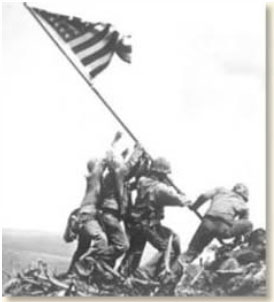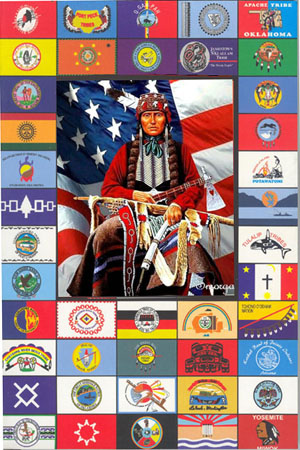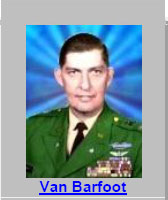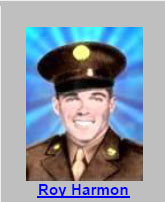D-day to Flag Day: Native America View
By Roy Cook
This USA nation holds this patriotic period of time in June very dearly in the heartland of America. We often hear of the 'greatest generation' in reference to the WW II VE day and the military efforts from June 6, 1942 invasion of France in Normandy to Berlin. Also, Flag Day June 14 every year is often overshadowed by D day and the 4th of July. Even less notice is accorded the contributions of our Native Warriors courage and commitment in the many conflicts of this USA nation in the past 250 years. Why is this? Especially since the Native American has voluntarily participated in every military effort to establish and defend this land and people for all America. Native American courage and achievement examples from both theaters of WW II is well documented but too often historically ignored.
During World War
II, the U.S. Marine Corps recruited Navajo Indians and used their language
as a battlefield code that the Japanese never broke. The Navajo Code Talkers
became the most celebrated and publicized of the radio units. All Marines
are "elite" fighters and welcomed Indians because of their warrior
reputation. The Navajo marines ended their ceremonial chants by singing
the Marine Corps Hymn in Navajo. Their eloquence in songs comes naturally
to Indians because of their long tradition of sings and ceremony in Dine
culture. Navajos formed a series of special all-Navajo  Marine
Corps signal units that encoded messages in their native language. Taking
advantage of the flexibility and range of the Navajo language, they worked
out translations of military and naval terms so that orders and instructions
could be transmitted by voice over the radio in a code the Japanese were
never able to break. They were used first in late 1942 on Guadalcanal.
Special Code Talker units were eventually assigned to each of the Marine
Corps' six Pacific divisions. By war's end, over 400 Navajo had served
as Code Talkers. Untold thousands of Marines owe their lives to the Navajo
Code Talkers. (Code talker, Joe Morris on left.)
Marine
Corps signal units that encoded messages in their native language. Taking
advantage of the flexibility and range of the Navajo language, they worked
out translations of military and naval terms so that orders and instructions
could be transmitted by voice over the radio in a code the Japanese were
never able to break. They were used first in late 1942 on Guadalcanal.
Special Code Talker units were eventually assigned to each of the Marine
Corps' six Pacific divisions. By war's end, over 400 Navajo had served
as Code Talkers. Untold thousands of Marines owe their lives to the Navajo
Code Talkers. (Code talker, Joe Morris on left.)
Thousands of young Indians went into the armed forces or to work in the war production plants that abruptly emerged during military and industrial mobilization. A 1942 survey indicated that 40 percent more Native Americans voluntarily enlisted than had been drafted. Lt. Ernest Childers (Creek), Lt. Jack Montgomery (Cherokee), and Lt. Van Barfoot (Choctaw) all of the famed 45th "Thunderbird" Infantry Division received the Congressional Medal of Honor in Europe. Childers had first distinguished himself in Sicily, where he received a battlefield commission. Later in Italy, unaided and despite severe wounds, he destroyed three German machine gun emplacements. During the Anzio Campaign in Italy, Montgomery attacked a German strongpoint single-handed, killing eleven of the enemy and taking thirty-three prisoners.
During the breakout from Anzio to Rome, Barfoot knocked out two machine gun nests and captured seventeen prisoners. Subsequently, he defeated three German tanks and carried two wounded men to safety. All of these exploits reinforced the "warrior" image in the American mind. Maj. Gen. Clarence Tinker, an Osage and a career pilot, was the highest ranking Indian in the armed forces at the beginning of the war. He died leading a flight of bombers in the Pacific during the Battle of Midway. Joseph J. "Jocko" Clark, the first Indian (Cherokee) to graduate from Annapolis, participated in carrier battles in the Pacific and became an admiral. Brumett Echohawk (Pawnee), a renowned expert in hand-to-hand combat, trained commandos. Native Americans took to Special Forces commando training; after all, their ancestors invented it. One Sioux soldier, Kenneth Scisson of South Dakota, became an American commando trained unit's leading German-killer. On a single patrol, Scisson added ten notches to his Garand rifle. Native Americans endured thirst and lack of food better than the average soldier. They had an acute sense of perception and excellent endurance, along with superior physical coordination.
Indians first saw
action in the Pacific theater. Over 300 Indians, including a descendant
of the famed Apache chief  Geronimo,
took part in the defense of Bataan and Corregidor. Over 2,000 Indian farmers,
workers, and businessmen in Oklahoma and New Mexico trained and fought
as part of the 45th Infantry Division for 511 days of combat in Italy
and Central Europe. The "Thunderbirds" had the highest proportion
of Indian soldiers of any division, but Indians served conspicuously in
the 4th and 88th Divisions, the l9th and 180th Infantry Regiments, and
the 147th Field Artillery Regiment, and in other Oklahoma National Guard
units.
Geronimo,
took part in the defense of Bataan and Corregidor. Over 2,000 Indian farmers,
workers, and businessmen in Oklahoma and New Mexico trained and fought
as part of the 45th Infantry Division for 511 days of combat in Italy
and Central Europe. The "Thunderbirds" had the highest proportion
of Indian soldiers of any division, but Indians served conspicuously in
the 4th and 88th Divisions, the l9th and 180th Infantry Regiments, and
the 147th Field Artillery Regiment, and in other Oklahoma National Guard
units.
With respect, Ira
Hamilton Hayes, USMC Airborne Warrior was a participant in the famous
WW II flag rising, February  25,
1945, on Mount Suribachi Iwo Jima. He was an Akimel Oodham, Pima, Indian,
born at Sacaton, Arizona, on 12 January 1923. In 1932, the family moved
a few miles southward to Bapchule. Both Sacaton and Bapchule are located
within the boundaries of the Gila River Indian Reservation in south central
Arizona. Hayes left high school after completing two years of study. He
served in the Civilian Conservation Corps in May and June of 1942, and
went to work as a carpenter.
25,
1945, on Mount Suribachi Iwo Jima. He was an Akimel Oodham, Pima, Indian,
born at Sacaton, Arizona, on 12 January 1923. In 1932, the family moved
a few miles southward to Bapchule. Both Sacaton and Bapchule are located
within the boundaries of the Gila River Indian Reservation in south central
Arizona. Hayes left high school after completing two years of study. He
served in the Civilian Conservation Corps in May and June of 1942, and
went to work as a carpenter.
On 26 August 1942, Ira Hayes enlisted in the Marine Corps Reserve at Phoenix, Arizona for the duration of the USA National Emergency. Following boot camp at the Marine Corps Recruit Depot at San Diego, Hayes was assigned to the Parachute Training School at Camp Gillespie, Marine Corps Base in San Diego, CA.
One month later, the Akimel Oodham Marine Warrior was qualified as a parachutist on 30 November and was promoted to Private First Class the next day. On 2 December, he joined Company B, 3d Parachute Battalion, Divisional Special Troops, 3d Marine Division, at Camp Elliott, California, In April, Private First Class Hayes' unit was designated Company K, 3d Parachute Battalion, 1st Marine Parachute Regiment. In October Private First Class Hayes sailed for Vella Lavella, arriving on the 14th. Here, he took part in the campaign and occupation of that island until 3 December when he moved north to Bougainville, arriving on the 4th. The campaign there was already underway, but the parachutists had a full share of fighting before they left on 15 January 1944.
 Hayes
was ordered to return to the United States and he landed at San Diego
on 14 February 1944, after slightly more than 11 months overseas and two
campaigns. The parachute units were disbanded in February, 1945 and Hayes
was transferred to Company E, 2d Battalion, 28th Marines, of the 5th Marine
Division, then at Camp Pendleton, California.
Hayes
was ordered to return to the United States and he landed at San Diego
on 14 February 1944, after slightly more than 11 months overseas and two
campaigns. The parachute units were disbanded in February, 1945 and Hayes
was transferred to Company E, 2d Battalion, 28th Marines, of the 5th Marine
Division, then at Camp Pendleton, California.
In September, Private First Class Hayes sailed with his company for Hawaii for more training. He sailed from Hawaii in January en route to Iwo Jima where he landed on D-day (19 February 1945) and remained during the fighting until 26 March. On Feb. 23, 1945 to signal the end of Japanese control, Private First Class Hayes and five other's raised the U. S. flag atop Mount Suribuchi on the island of Iwo Jima. The front four are (left to right) Para marine Ira Hayes, Franklin Sousley, John Bradley and Para marine Harlon Block.
WW II Native American Indian Medal of Honor recipients:
 Native
American Flag Day
Native
American Flag Day
“I pledge allegiance
to my flag and to the Republic, for which it stands, one nation, indivisible,
with liberty and justice for all.” Francis Bellamy, 1892
“Some day the earth will weep, she will beg for her life, she will cry with tears of blood. You will make a choice, if you will help her or let her die. And when she dies, you too will die.” John Hollow Horn, Oglala Lakota, 1932“We are born free and united brothers, each as much a lord as the other … I am the first and last of my nation … subject only to the Great Spirit.” Huron, 1693.
We hope that this Flag day may serve as a cathartic release of the frustration and sadness that other American Indians have felt, but also that it would remind us all how we are all inextricably bound to each other, and that our future depends on how we care for each other, saying that the events of 9/11 and Boston reaffirmed our belief that in the face of tragedy as Native Americans we need to respect each other if we are to create the future that our Tribal descendants deserve to inherit. Our hope remains that our Native American view of the greatest generation and tribal cultures warriors may instill pride and patriotism in our land and people.





